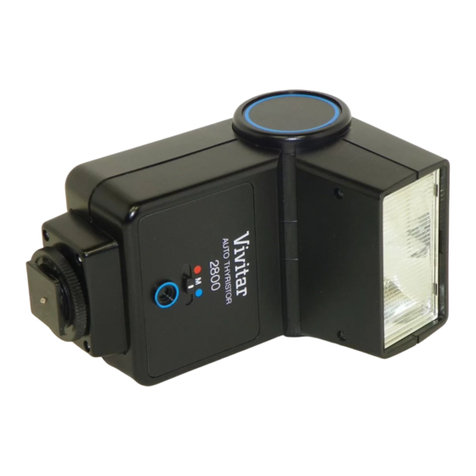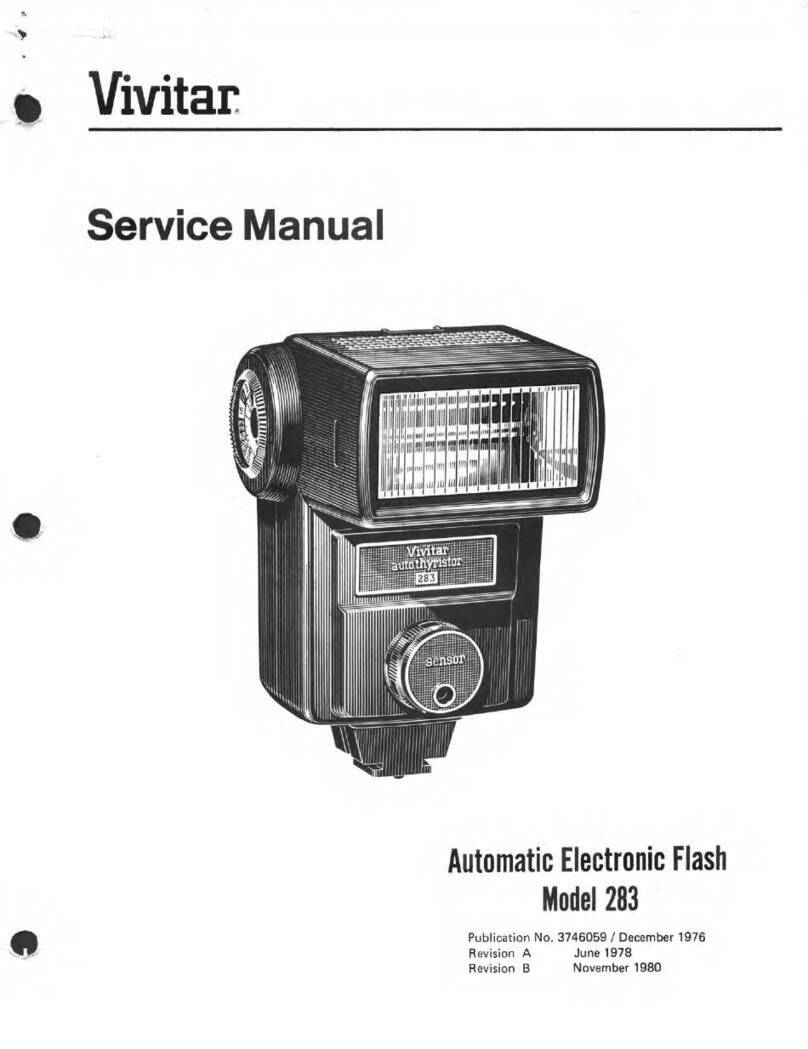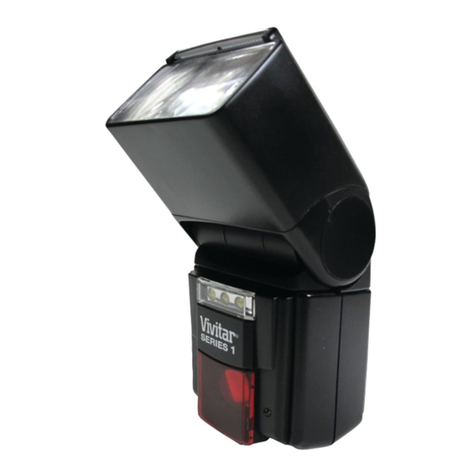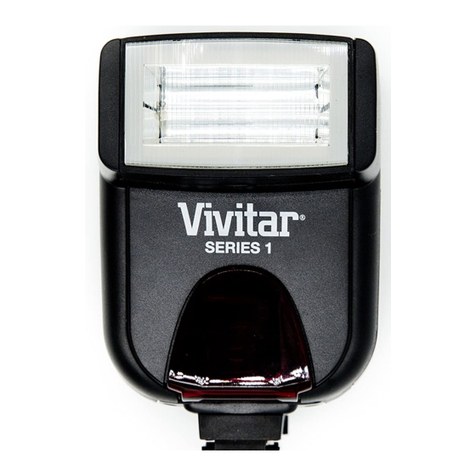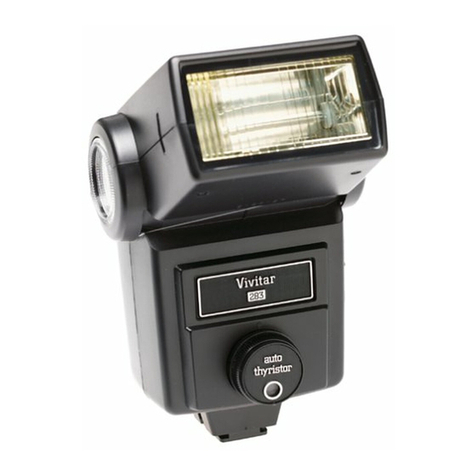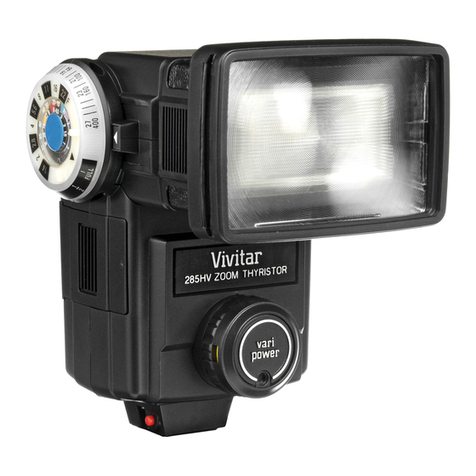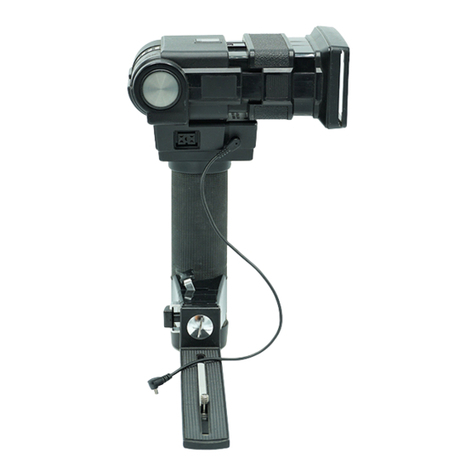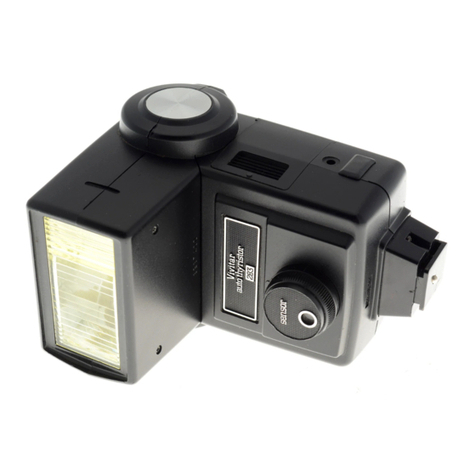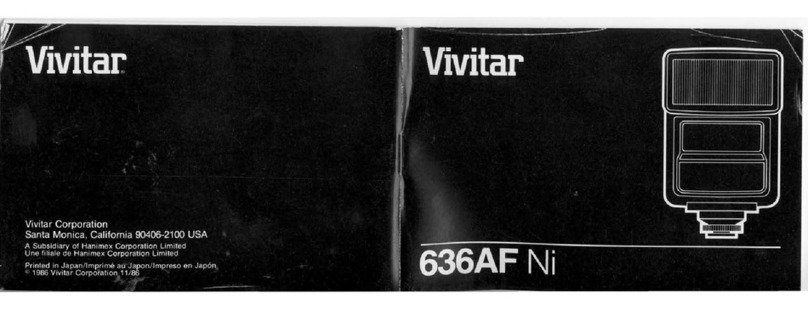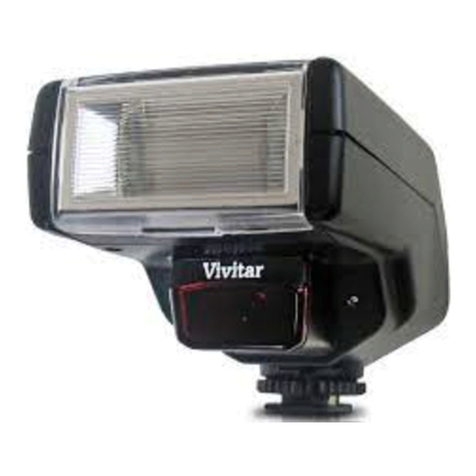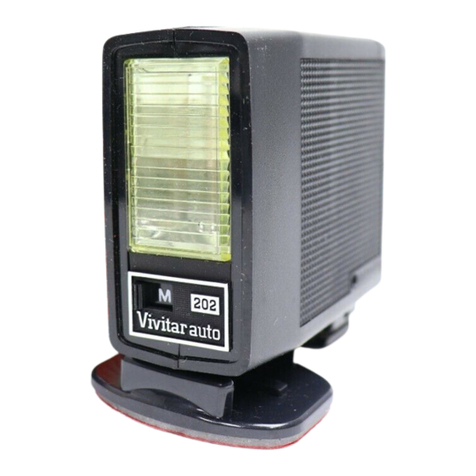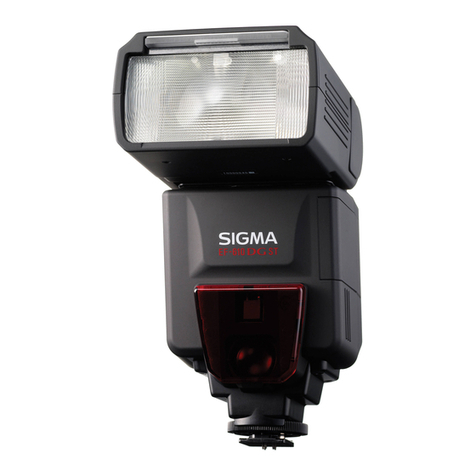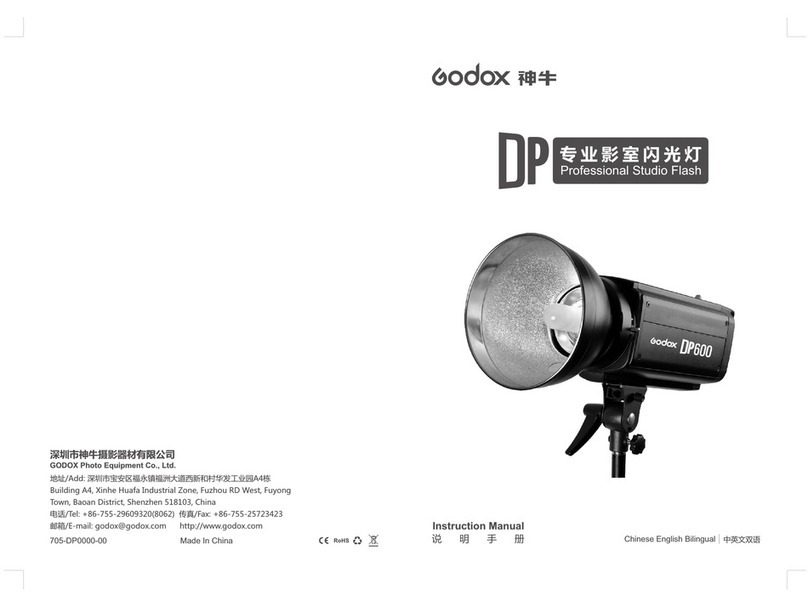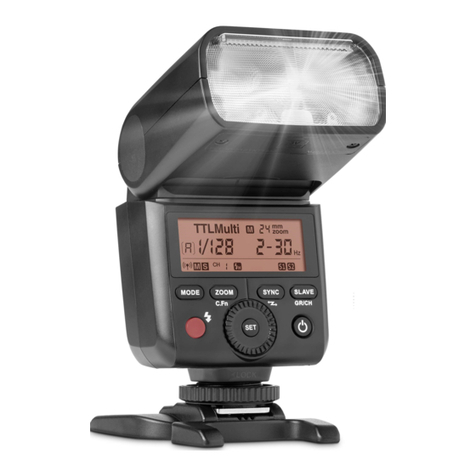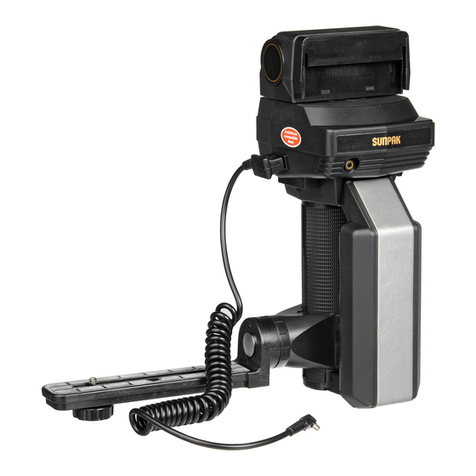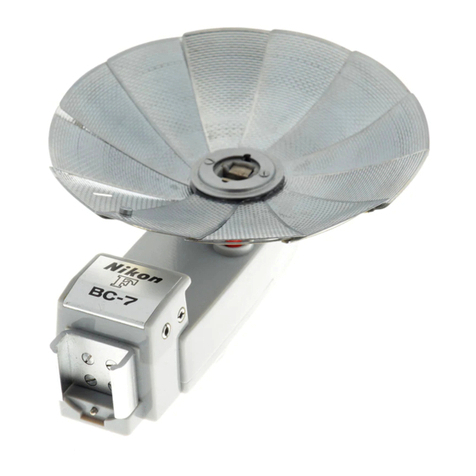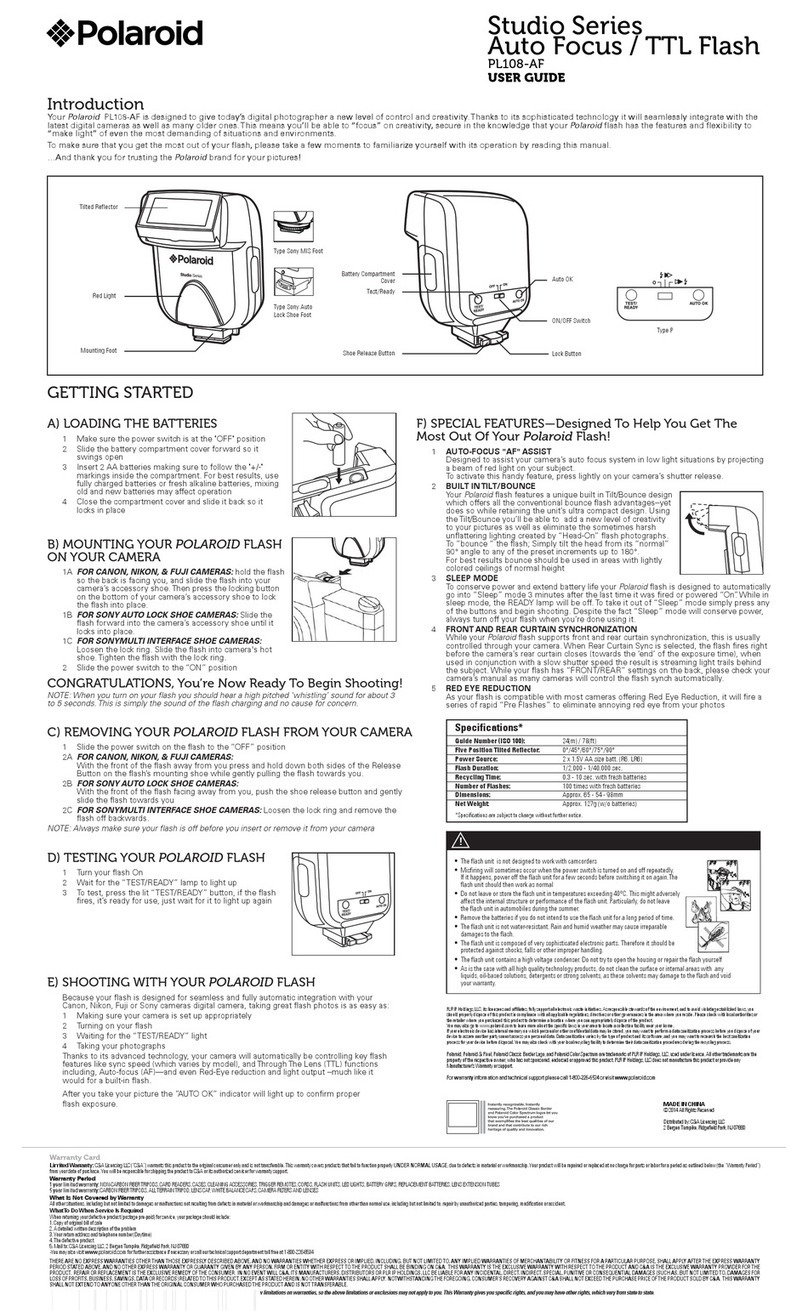The DF200 is a slave flash, triggered by your cameras built-in
flash. In a situation where other cameras are present it is
possible that your DF200 flash may be triggered by another
cameras flash. You may prevent this by using the DF200’s
hold feature. Press the hold button (11) to suspend the
operation of the DF200 temporarily.
When the hold button (11) is depressed, the green detect
indicator LED (15) will illuminate, indicating that your DF200
is now temporarily inactive. While on hold, the green LED will
remain a steady green. The DF200 will not respond to any
flash trigger, either intentional or not.
To resume operation, depress the hold button (11) again and
the green detection indicator (15) will cease to illuminate. The
DF200 is now ready to resume normal operation.
Power Output (Power Ratio Switch)
The flash output can be adjusted manually to prevent under
or over-exposure. The power of the DF200 flash can be set
adjusting the “Power Ratio” switch to four intensities: 1 (Full
power), 1/4, 1/8, or 1/16 power. Use this table as a guide:
ft/meter ZOOM W2 W1 MID T1 T2
175/23 83/25 92/28 98/30 102/31
1/4 37/11 41/13 46/14 49/15 51/16
1/8 26/8 30/9 33/10 35/11 36/11
Power
Setting 1/16 18/5 20/6 23/7 24/7 25/8
Bounce Flash
When you take a flash photograph, sometimes a strong
shadow will appear behind the subject as a result of a direct
flash. To minimize or eliminate this shadow, tilt the flash head
upward to reflect the flash off of the ceiling or a wall.
The flash head is adjustable from 0°to 90°vertically. There
are detents (click-stops) at several positions including 30°,
45°, 60°, 75°and 90°positions. The flash head may be
rotated 330°horizontally for additional flexibility.
§The effectiveness of a bounce flash is dependent upon
distance and the condition of the reflecting surface. The
angle of the flash must be set properly to achieve the best
possible lighting effect. Normally, when a flash is bounced
against a surface, it loses 2-3 apertures of light (f-stops),
even if the surface is white.
§
Exposure in bounce lighting is a factor based upon
distance, first from the flash to the reflected surface, then
to the subject and finally back to the camera. The
exposure will vary with camera aperture setting, the
distances involved, and quality of the reflective surface.
Experiment to derive the best results.
